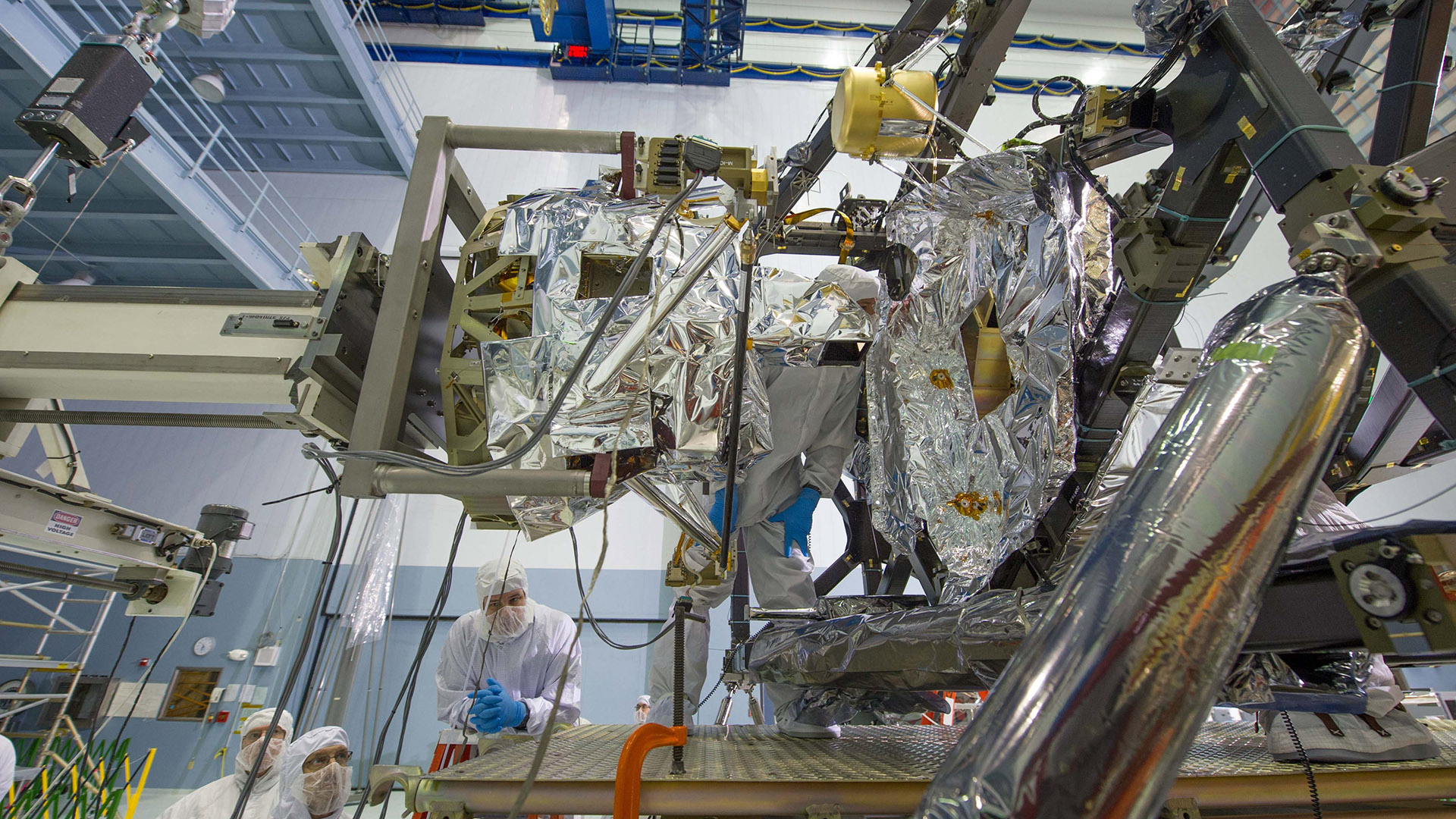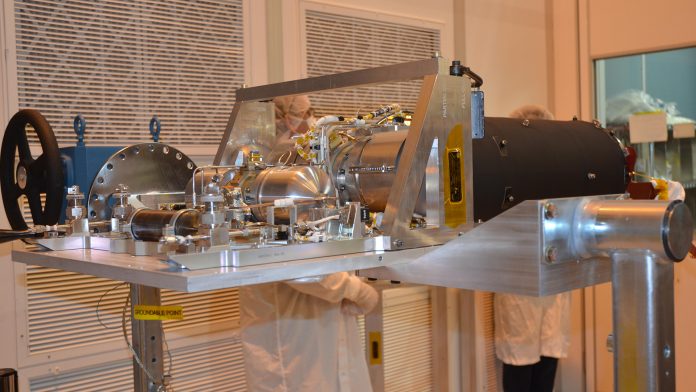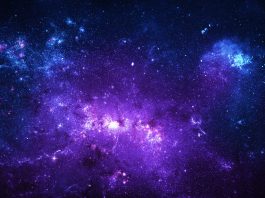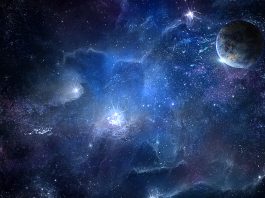George Rieke, Professor of Astronomy and Planetary Sciences at the University of Arizona and Science Team Lead for the James Webb Space Telescope’s Mid-Infrared Instrument, outlines the complex process of building a crucial instrument for the JWST.
The James Webb Space Telescope (JWST), the largest and most powerful telescope to launch into space, started its journey on the 25 December 2021, carrying four crucial scientific instruments: the Mid-Infrared Instrument (MIRI), Near-Infrared Camera (NIRCam), Near-Infrared Spectrograph (NIRSpec), and Near-Infrared Imager and Slitless Spectrograph/Fine Guidance Sensor (NIRISS/FGS).
Expanding on the discoveries of the Hubble Space Telescope (HST), JWST will study every phase in the history of our Universe, from the first luminous glows after the Big Bang, to exoplanets and the evolution of our Solar System.
The Mid-Infrared Instrument, known as MIRI, will carry out extremely sensitive and detailed studies of stars and galaxies in infrared light. MIRI was built by the MIRI Consortium, a group that consists of scientists and engineers from European countries, a team from NASA’s Jet Propulsion Laboratory in California, and scientists from several US institutions.

MIRI has both a camera and a spectrograph that sees light in the mid-infrared region of the electromagnetic spectrum, with wavelengths longer than our eyes can see – covering a wavelength range of 5 to 28 microns. Its sensitive detectors will allow it to see the redshifted light of distant galaxies, newly forming stars, and faintly visible comets, as well as objects in the Kuiper Belt. MIRI’s camera will provide wide-field, broadband imaging and the spectrograph will enable medium-resolution spectroscopy, providing new physical details of distant objects.
Webb’s MIRI instrument carries detectors that need to be at a temperature of less than 7 kelvin to operate properly. This temperature is not possible on Webb by passive means alone, so JWST carries a ‘cryocooler’ to cool MIRI’s detectors.
MIRI was developed through an equal partnership between NASA and the European Space Agency (ESA). NASA’s Jet Propulsion Laboratory (JPL) leads the US efforts for MIRI, with George Rieke at the University of Arizona appointed as the MIRI US Science Team Lead. In conversation with The Innovation Platform, George Rieke discusses the long and challenging development process behind the MIRI instrument.
How was MIRI developed and what role does it play in the James Webb Space Telescope?
Originally, the James Webb Space Telescope was planned to observe only from 0.6 to 5 microns – the red end of the visible to eight times longer wavelengths. This spectral range is relatively well observed from the ground, particularly at shorter wavelengths. Whilst the range from 3 to 25 microns can be observed from the ground, this is difficult due to thermal emission of the telescope and atmosphere that hold the sensitivity to 1,000 times poorer than JWST can reach. This range is therefore not as well explored, and there were concerns that JWST would miss out on significant amounts of potentially exciting new science. To find a solution to this issue, specialists from ten European countries and NASA, through its Jet Propulsion Laboratory, pooled resources to add an instrument to cover this range – MIRI.
Initially, the biggest challenge to overcome was that MIRI was often seen and treated as an expendable ‘extra’ instrument, rather than a critical feature. The nature of the collaboration between the 11 different organisations contributing parts of the instrument, plus another for the cooler, also posed a threat to the smooth-running and synchronisation of processes. This, however, was well controlled by a series of highly skilled and experienced managers both at the JPL and in Europe.
We experienced a lot of potential issues with our detectors. The cooler for MIRI also turned out to be an immense technical problem that was finally solved by Northrop Grumman, with some help from both JPL and the Goddard Space Flight Centre.
MIRI will carry out extremely sensitive and detailed studies of stars and galaxies in infrared light. How will it do this?
MIRI takes advantage of being in space, where the telescope can be cooled to eliminate its infrared emission that otherwise blinds infrared instruments, and to get rid of the absorption and emission of the atmosphere. The previous cold space infrared telescopes have been no larger than 85cm in diameter and, as a result, their images were blurry. The sharpness of an infrared image improves in direct proportion to one over the telescope diameter. JWST is 6.5m in diameter, providing great sensitivity from a cold space telescope and enabling sharp images to be captured.
How will the JWST complement and expand on Hubble’s discoveries and what role will MIRI play in this?
Hubble has never had an instrument that reaches further than a wavelength of 2.3 microns, so the entire MIRI wavelength range was unexplored. The HST near-infrared instruments were essentially imagers with very rudimentary spectrometers. In this near-infrared range, JWST has much larger and better detectors and very sophisticated imagers, spectrometers, and coronagraphs. This big improvement in the near infrared makes the most distant galaxies accessible. The capability of the near-infrared instrument, coupled with MIRI, lets us study exoplanets in unprecedented detail. MIRI’s long wavelengths allow us to look for sources deeply buried in the clouds of dust where stars form, and potentially also the birthplaces of active galactic nuclei, such as quasars.
How will MIRI help astronomers using JWST to address previously unanswered questions and what are some of these questions expected to be?
The capabilities of JWST, and particularly of MIRI, are such a momentous leap forward that we will probably find out important things we know nothing about. For this reason, the list of unanswered questions is very incomplete at present.
However, there are some things we can predict. We know that our list of quasars does not include ones buried in dense dust clouds, which is probably where they form. The buried quasar heats up the cloud where MIRI will find these sources. The same applies to stars in the process of forming – in the first few hundred thousand years of their lives, for instance. Not only will we find them, but the MIRI spectrometer will help us to determine how hot they are and what the conditions are in their circumstellar disks where planets form.
MIRI will be able to image more mature exoplanets and enable us to diagnose what is happening in their atmospheres and whether they have a lot of trapped heat like Jupiter has. Combined, the NIRCam, NIRSpec, and MIRI observations of exoplanets will allow us to determine how giant gas-rich planets form. For example, we should be able to establish if they first form planetary seeds like large asteroids and then collect their gas envelopes around them, or instead form from a collapse of instabilities in those circumstellar disks.
George Rieke
Professor of Astronomy and Planetary Sciences
University of Arizona
www.arizona.edu
More on the installation of the James Webb Space Telescope
http://www.linkedin.com/school/uarizona
http://www.facebook.com/uarizona
https://twitter.com/uarizona
Please note, this article will also appear in the ninth edition of our quarterly publication.









